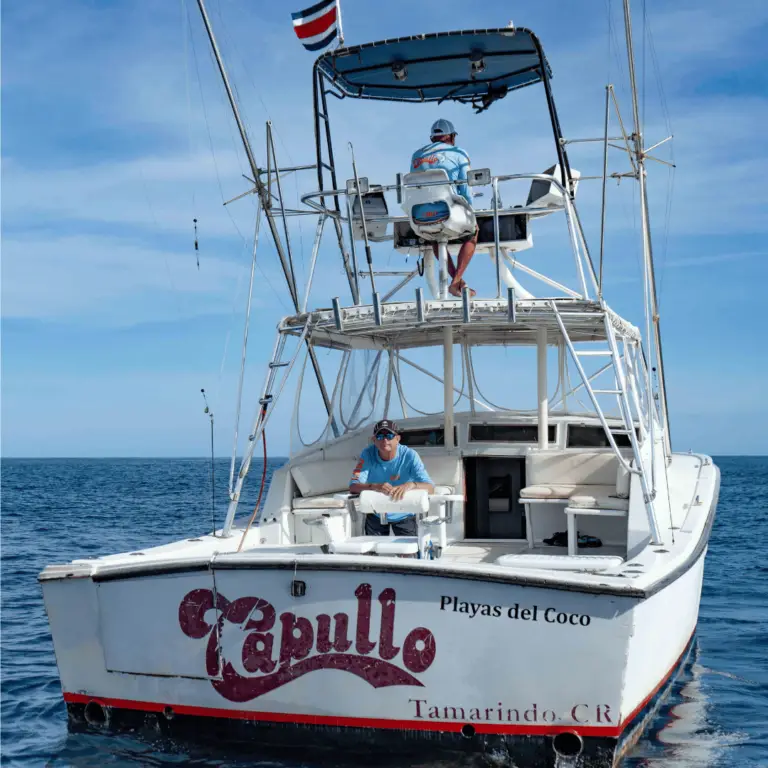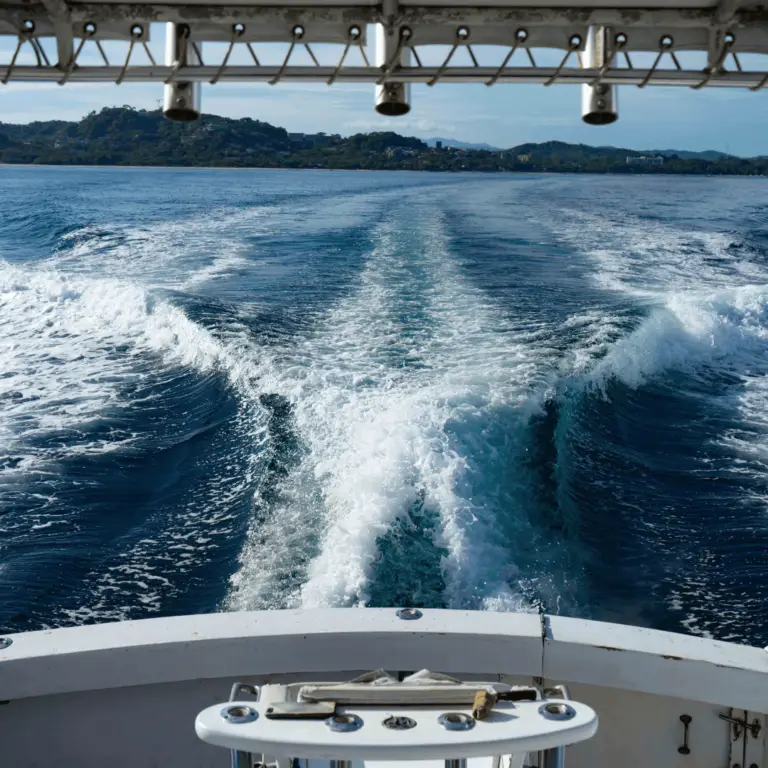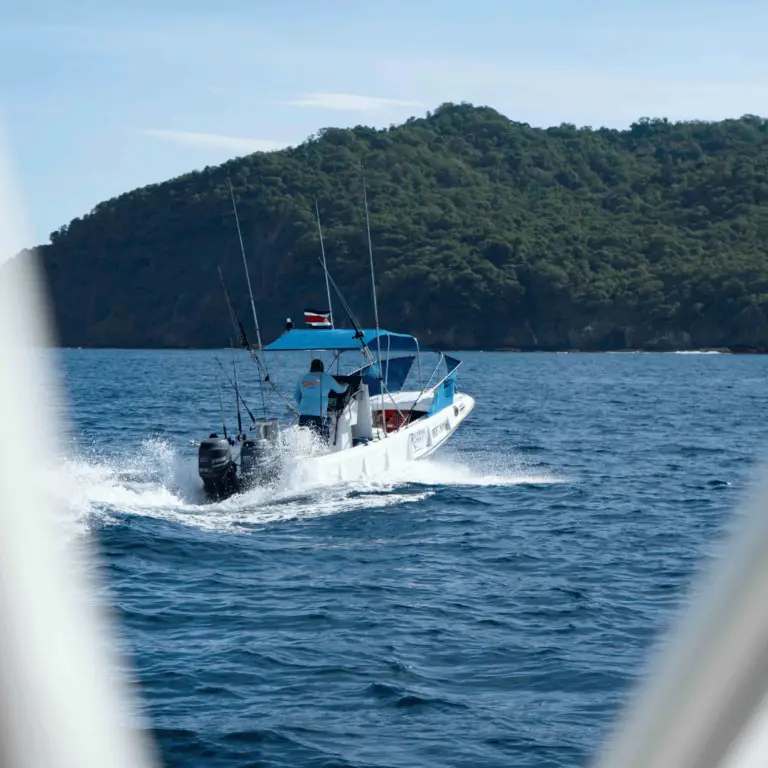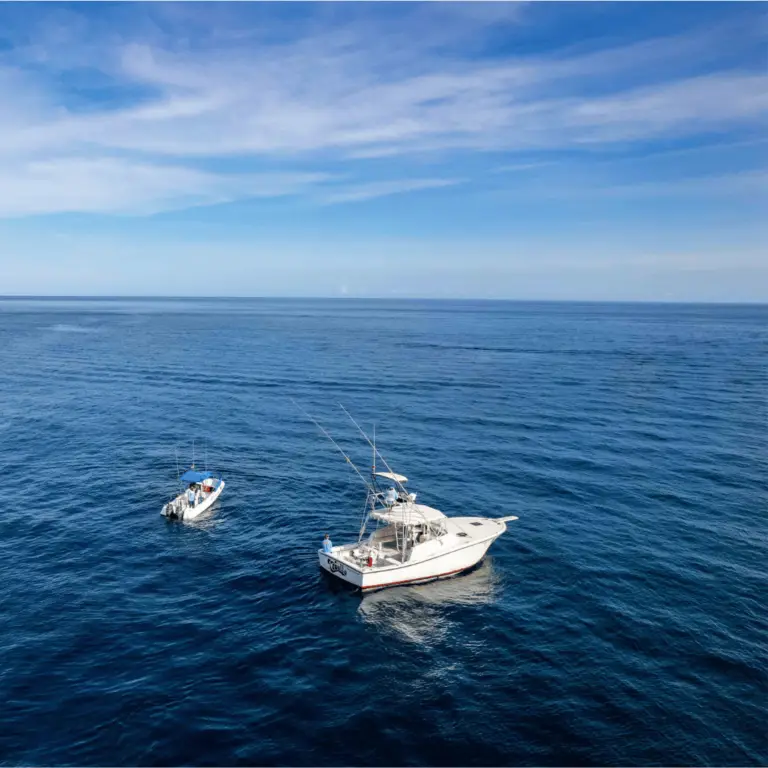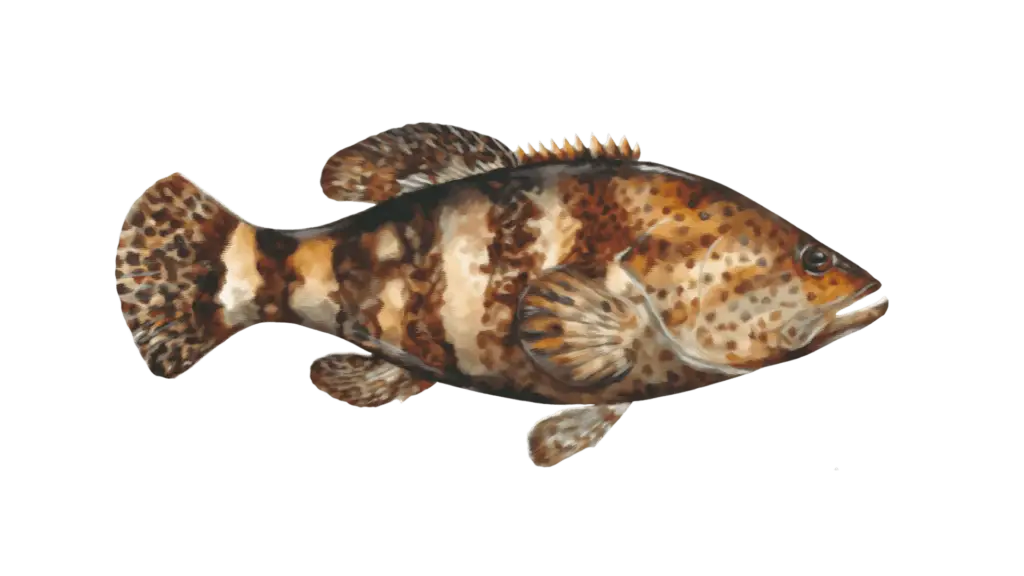
Groupers are fish belonging to the Serranidae family and the Perciformes order. The term “grouper” derives from the Portuguese group. These species were referred to by various names in different countries. In Australia, they are referred to as Groper, whereas in the Philippines they are known as Lapu Lapu or Pugapo.
Additionally, they were known as Hapuku in New Zealand and Hammour in the Middle East. Groupers were found in the majority of the world’s oceans but primarily in milder and tropical waters.
Due to the abundant marine ecosystem in Costa Rica, grouper can be found from Bay Pines to Manuel Antonio Beach, as well as Jaco Beach, Drake Bay, the Osa Peninsula, and Tamarindo.
A grouper’s enormous maw and bulky physique are two of its physical characteristics. They can reach lengths of over one meter and weigh around 100 kilograms. Most of them have drab brownish or greenish hues, while others have brighter ones. Their mouth does not contain enough teeth to bite their prey, so they typically ingest it.
Grouper Fish Primary Sources Of Nutrition
Their primary sources of nutrition are fish, octopuses, and crustaceans. They typically remain stationary rather than pursuing their prey. When their prey is close, their pharynx and gills will forcefully suction and ingest their prey alive. May through August is the typical reproductive season for most groupers.
Some groupers are Protogynous hermaphrodites in nature, which means they are born female but transform into males as they mature. Typically, the largest male in the group will mate and produce a retinue of 10 to 15 females.
Where can a Grouper be caught in Costa Rica?
This tropical grouper is reef-associated at depths between 80 and 130 meters.
Important information concerning the Grouper in Costa Rica
Because of their immensity, they often appear menacing and frightening. Groupers are, in reality, relatively timid fish. They have massive mouths with few canines. Their canines and jaws are utilized to crush rather than bite their prey.
In fact, they typically consume their food whole rather than tearing it apart.
Adult groupers typically consume an assortment of fish, including snappers, wrasses, parrotfish, and damselfishes. Furthermore, mature groupers kill octopuses, lobsters, crabs, and other crustaceans. Young groupers typically consume crustaceans, plankton, microalgae, and microscopic organisms.
The Grouper has a relatively lengthy average lifespan; some groupers have lived for more than 30 years.
Techniques for Catching Grouper In Costa Rica
The best methods are as follows:
- Inshore Fishing
- Bottom Fishing
- Coastal Fishing
- Jigging
Tamarindo: A Grouper’s Paradise
Tamarindo, Costa Rica, is renowned for its pristine beaches and vibrant surfing community, but for anglers, it’s a hidden paradise for grouper fishing. The warm tropical waters and the vibrant underwater ecosystem of Tamarindo create a prime environment for groupers. Here, with the help of local guides and charters like Capullo, anglers can venture into specific spots known for an abundant grouper population.
Gearing up in Tamarindo
When targeting grouper in Tamarindo, it’s essential to have the right gear. These are powerful fish, so strong, sturdy lines and tackle are recommended. Live bait, especially smaller fish or crustaceans, can be particularly effective. If you’re using artificial lures, jigs that mimic smaller fish or squid can entice a grouper.
Local charters such as Capullo provide all the necessary equipment and knowledge, ensuring that even if you’re a beginner, you have a high chance of reeling in a sizable grouper. Their experienced captains and crew understand the waters of Tamarindo like the back of their hands and can guide you to the grouper hotspots.
Conservation and Responsible Fishing
Costa Rica takes pride in its commitment to conservation. While grouper fishing is popular, it’s essential to be aware of local regulations and seasons. Catch and release is encouraged for specific grouper species to ensure their population remains healthy. Always check the current rules and guidelines or consult with local fishing charters.
Beyond Fishing: Enjoying Grouper in Costa Rican Cuisine
After a successful day fishing in Tamarindo, there’s nothing quite like enjoying your catch. Grouper is a delicacy in Costa Rican cuisine, often grilled or fried and served with local spices and sides. Many seaside restaurants in Tamarindo will happily prepare your catch, offering you a fresh and delicious way to celebrate your fishing adventure.
Conclusion
Costa Rica’s Tamarindo is more than just a surfer’s paradise; it’s an angler’s dream. With the majestic grouper lurking in its waters, both seasoned and novice fishermen can experience the thrill of the catch. Whether you’re casting your line from the shore, diving deep into the underwater world, or indulging in local culinary delights with your catch of the day, grouper fishing in Tamarindo offers an experience like no other. So, the next time you think of a fishing adventure, let the rich waters of Tamarindo and the expertise of local charters like Capullo guide you.

